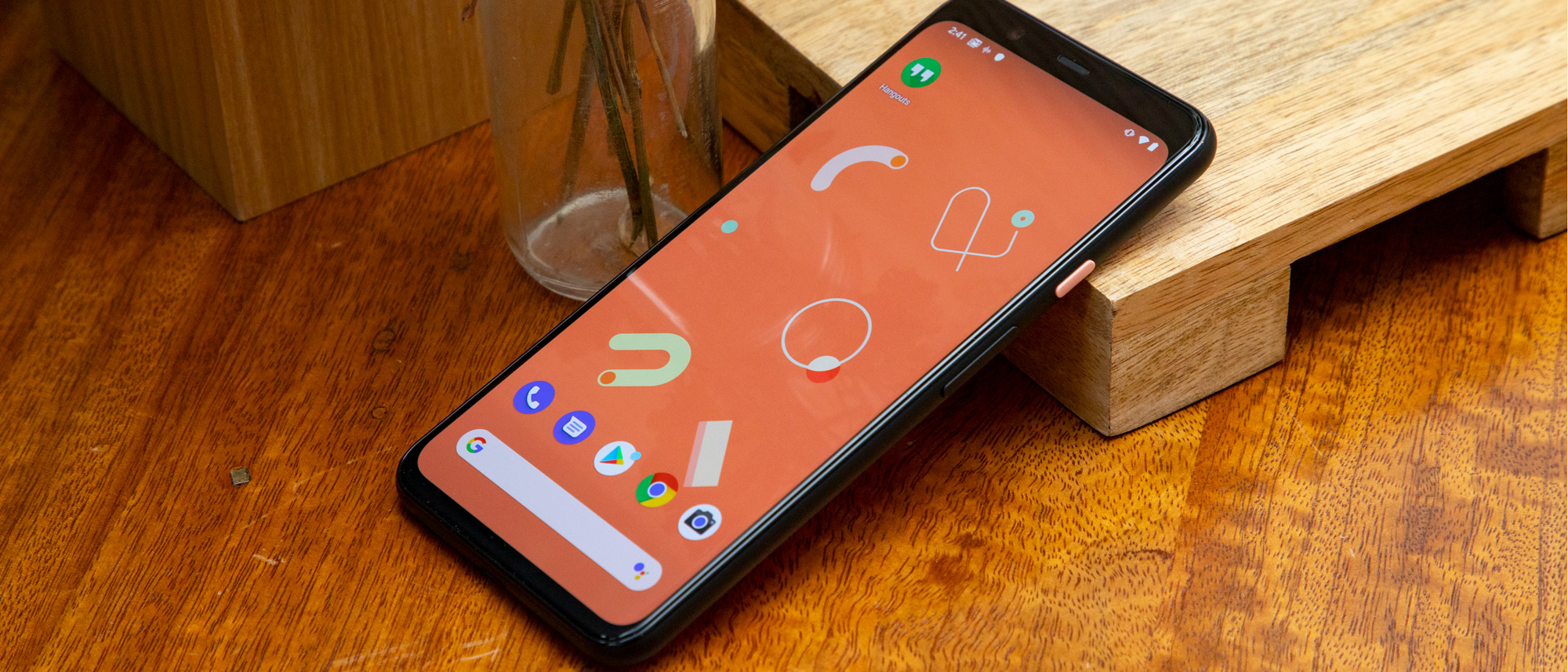TechRadar Verdict
The Google Pixel 4 XL is a handsome phone in its simplicity that, by the same coin, feels less impressive than its Android flagship counterparts. It doesn’t help that its new standout features are inessential, and erratically functional. But new interface improvements and a camera suite that’s better in both the hardware and software departments ensure that this phone stands up to be counted, even if it doesn't stand out from the competition.
Pros
- +
Top-of-the-line cameras
- +
Simple, no-nonsense design
Cons
- -
Face Unlock is finicky, no fingerprint sensor
- -
Low storage options
- -
Battery life is barely adequate
Why you can trust TechRadar
Two-minute review
The Google Pixel 4 XL is a curious step for Google that minimizes the physical design while striking out in new territory with experimental features. While the latter aren’t widely implemented enough to be useful, the rest of the device lives up to its predecessors’ legacy, and it’s a supreme vehicle for the newly-improved camera.
This isn’t a surprise, and most of the improvements on the phone are in the cameras – both software and hardware. The added telephoto lens produces sharper zoomed images and truer portrait mode effects, while Night Sight has improved, too. There’s even a pair of sliders added to the basic photo modes – Brightness and Shadow – that let you preview image tweaks before taking shots.
Otherwise, the phone isn’t too different from the Google Pixel handsets you know and love - but stripping out the fingerprint sensor in favor of Face Unlock’s finicky facial-recognition seems like a generational tech shove that we normally see from Apple. Sure, it will probably get better with later updates, but it’s less consistent than we’d expect coming from the tech giant, especially since it features the promising debut of the long-awaited Soli radar technology.
The other new feature made possible by Soli is Motion Sense, which enables you to control music and alarms by gesturing above the device. It’s even more erratic than Face Unlock, though users will narrow down the action area and precise hand motions needed to control the device through trial and error.
Given it’s not used anywhere else on the phone, it’s something of a stillborn addition, and while more apps could code in functionality, the onus is on Google to make this feature resonate enough for users to learn it.
Those aren’t quite landmark features, and the remaining highlights are such a grab bag of improvements that it’s not clear what’s better overall about the Pixel 4 XL. The battery disappoints, but rest assured, the phone continues to be a casual photographer’s dream - and combined with Android 10, Google’s larger handset is the simplest, cleanest non-iOS phone on the market.
That’s reflected in the physical design, too: gone is the Pixel 3’s two-tone gloss-and-matte back, replaced with a frosted rear glass finish (except in the Just Black color) and, on the front, a full top bezel instead of a notch. Lining the side is a textured (not slick) aluminum frame that gives some grip, at least on two of the three available colors. Dual speakers poke out the bottom around a USB-C port, while the right side has a lock button and volume rocker.
All together, the phone is more of a pragmatist’s flagship, eschewing the shimmering gradients and waterfall-edged displays of the Samsung Galaxy Note 10 or Huawei Mate 30 Pro in favor of bold-hued simplicity. It’s not at the head of the pack for new, industry-leading features - but if you like shooting photos without much fuss, the Google Pixel 4 XL is for you.
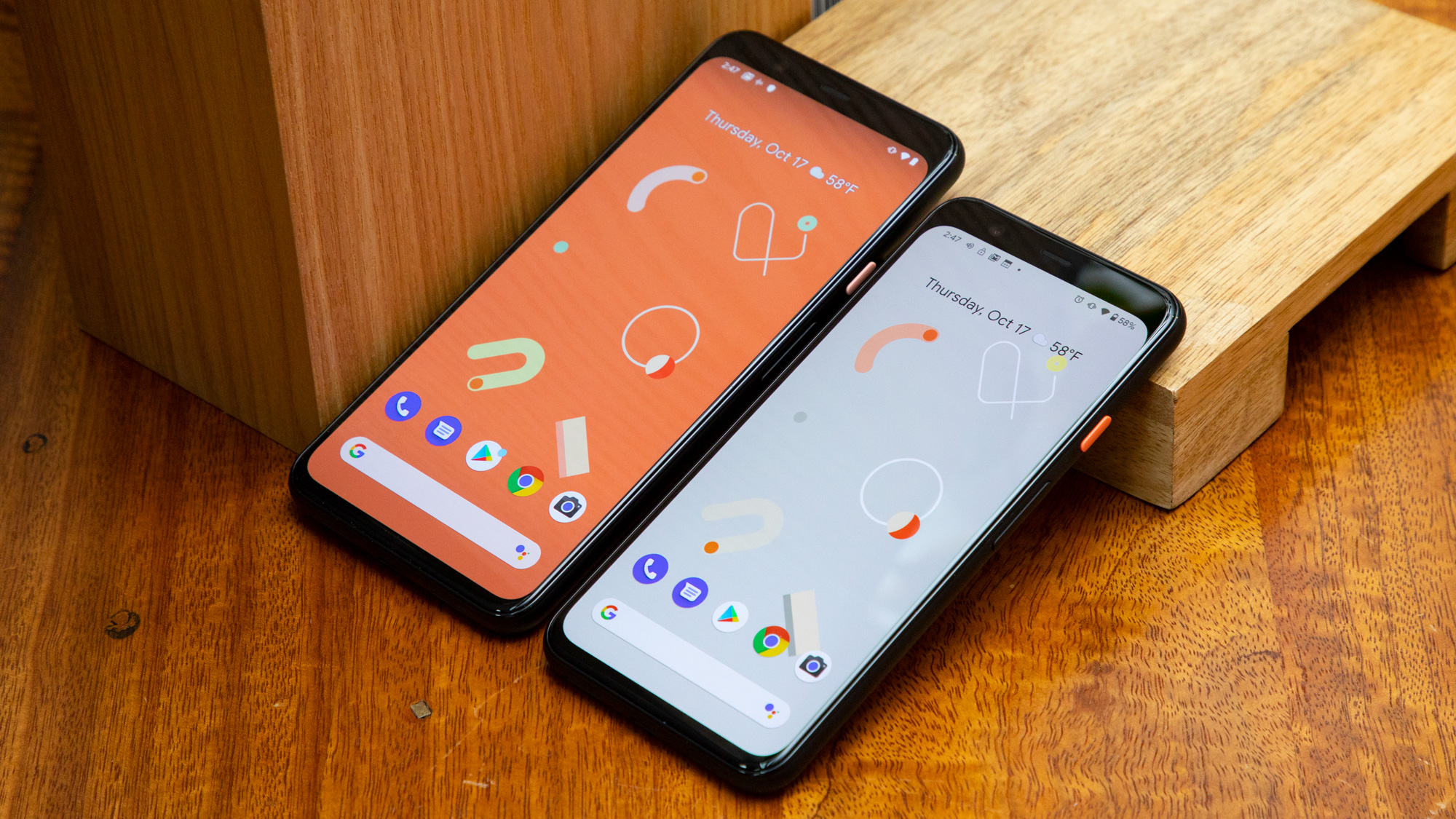
Price analysis
The Google Pixel 4 XL release date is Thursday, October 24 and the price starts at $899 / £829 / AU$1,279 for the measly 64GB of storage model. There's also a more reasonable 128GB model, but that will cost you $999 / £929 / AU$1,429.
The Pixel 4 XL price echoes the Pixel 3 XL launch price, at least in the US. It’s £40 cheaper than the 3 XL was in the UK, and AU$70 cheaper in Australia. Ultimately, it’s a slight discount over other plus-sized flagships, but the lack of parity in frilly features and hardware makes it hard to judge if this is an even exchange.
At launch, the Pixel 4 XL doesn’t come with the usual headphones in the box: instead, Google is giving new owners a $100 promo credit to the Google Store so they can pick up what accessories they want. It’s unclear if this extends to buyers in other countries and currencies, nor if it will last beyond the release window.
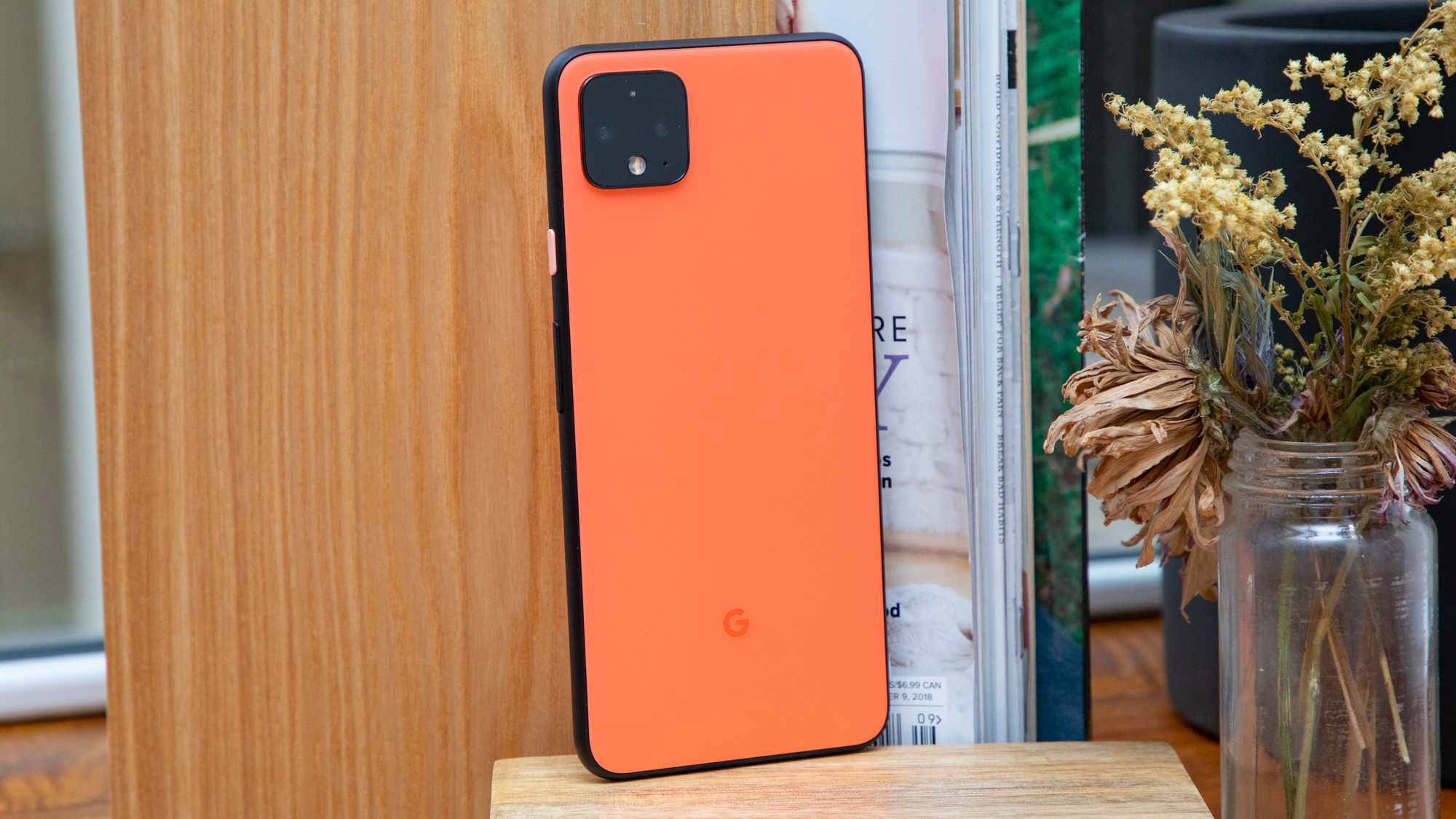
Design
While other Android flagships have strived for ever-sleeker and glossier looks, the Google Pixel line has hewed toward simpler rounded geometry - the ‘premium’ has been in the hardware and software, not the design.
The Google Pixel 4 is an evolution of this logic with an unblemished back and a more conservative - but clean - return to hiding the front-facing camera in a black top bar. Gone is the ugly notch we saw in Google’s previous XL phone.
The Pixel 4 XL is essentially the same dimensions as the Pixel 3 XL, with the same lock button on the right (in Oh So Orange color, in all but Just Black) and volume rocker below it. There’s a SIM slot on the right that, sadly, doesn’t support microSD. The rear glass is either matte (in Clearly White and Oh So Orange colors) or glossy (Just Black) finish.
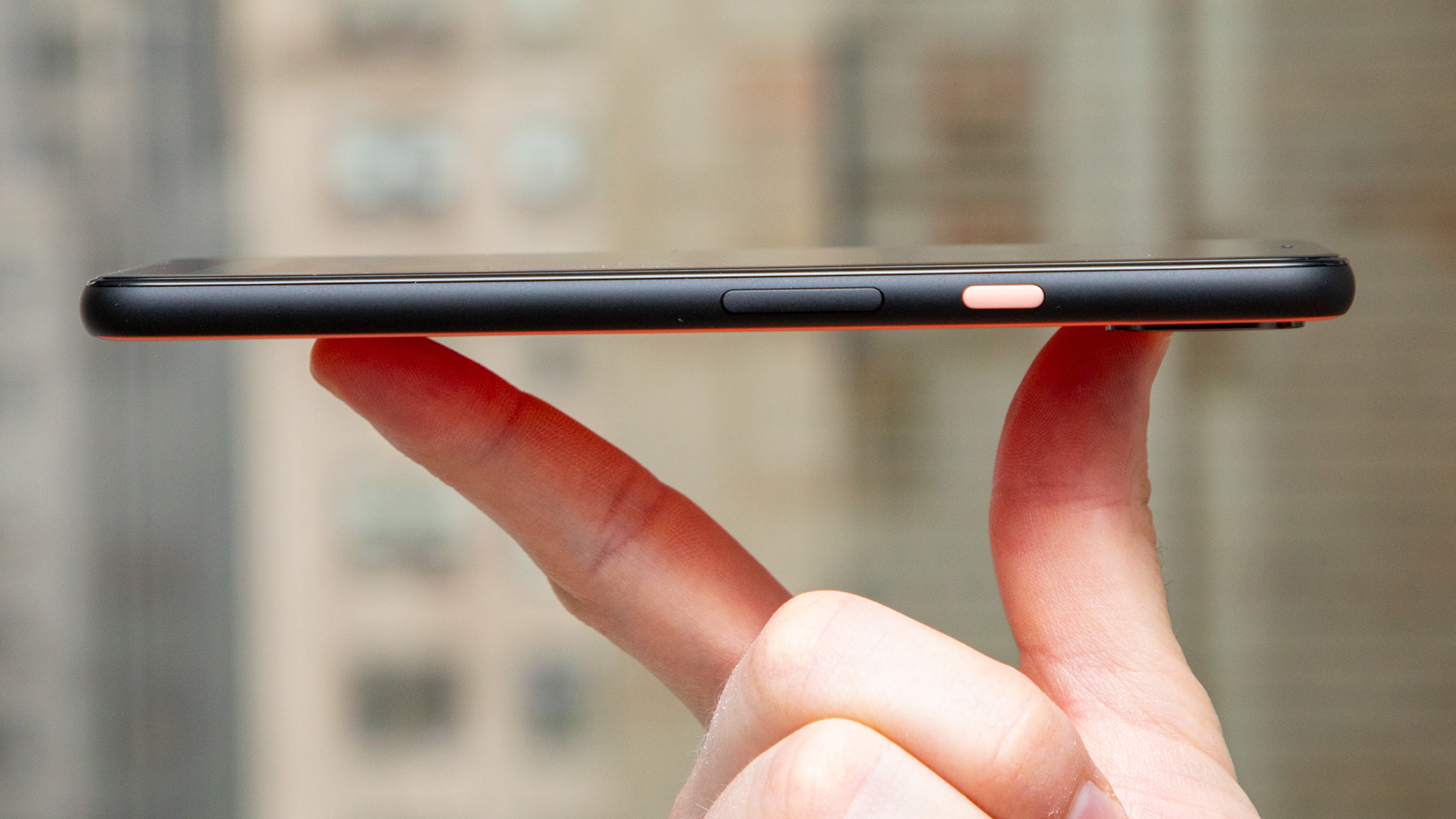
As befits a Google flagship phone, the Pixel 4 XL comes in a few cute hues: an accurately-named Just Black, the black-bordered Clearly White (known as the ‘penguin color’ by phone aficionados) and Oh So Orange - which is somewhere between salmon and orange sherbet.
The bottom has the standard USB-C port flanked by speakers, which give better sound than we’ve heard in any other 2019 flagship - a more balanced, bass-filled sound than the treble-favoring iPhone 11 and Samsung Galaxy S10.
Instead of more physical buttons, you can summon Google Assistant by squeezing the sides below the volume rocker. This can be tweaked to take more or less force to activate (we set it to lower sensitivity as we kept accidentally activating it when picking the handset up).
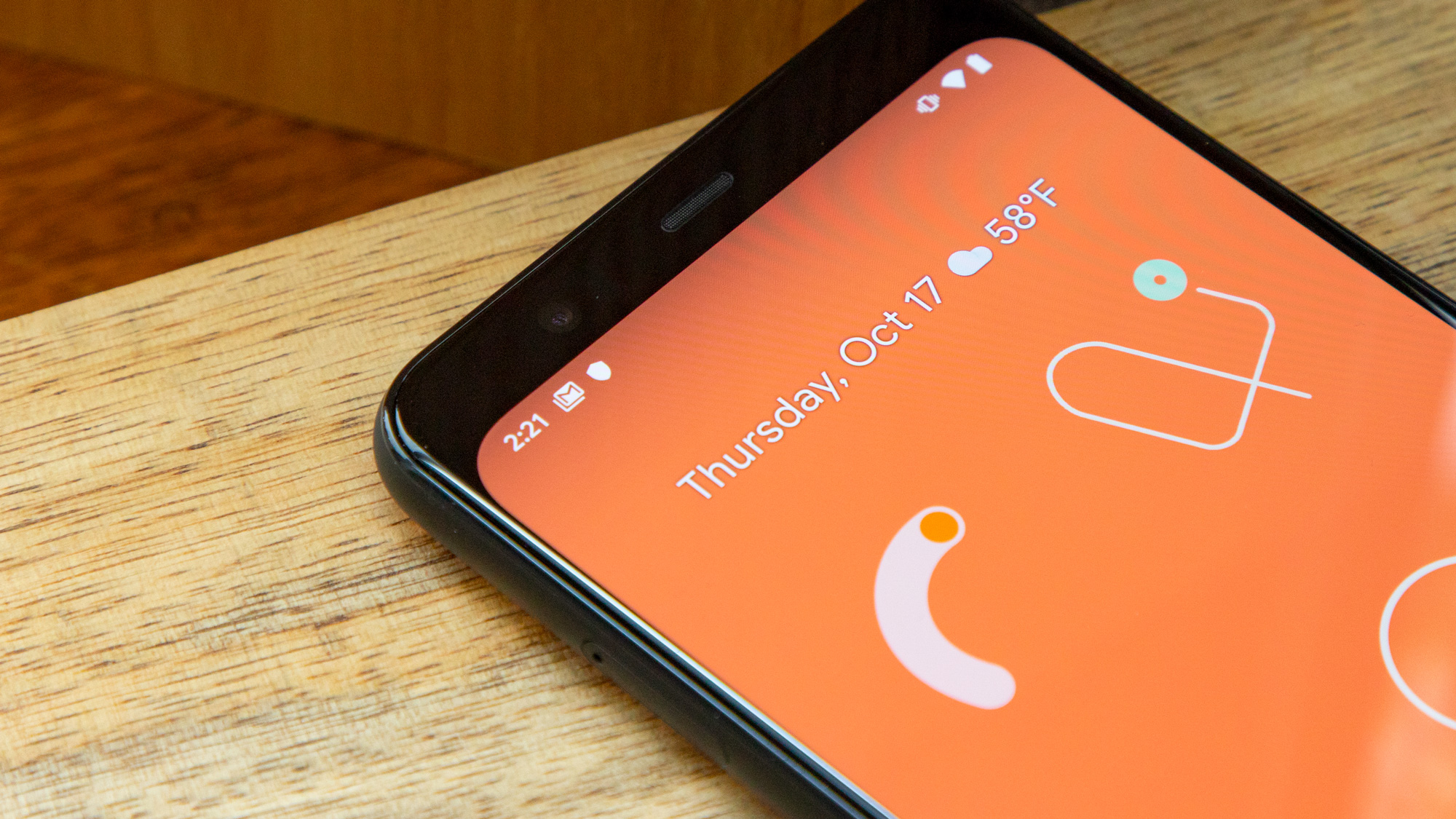
Display
The Google Pixel 4 XL has nearly the same OLED 6.3-inch size and same QHD+ resolution as its predecessor, though it’s slightly longer at a 19:9 ratio. Some of that is likely taken up by the reinstated top bezel, and we could nitpick here in pointing out the lost screen real estate with the dismissal of the notch, but those screen nibs were never that useful anyway.
But the new display is superior to its predecessor in terms of refresh rate, which has been bumped up to 90Hz. It’s noticeably smoother in zooming around both apps and games like PUBG, though we didn’t see so much improvement that it’s hard to go back to other phones with 60Hz screens for the average consumer.
Otherwise, the OLED screen is gorgeous, as expected, with HDR support that shows streaming media and photos in vivid clarity. A new feature, Ambient EQ, taps the onboard sensors to automatically adjust the display’s color temperature to mimic the surrounding environment. We didn’t notice it was working until we switched it off to reveal a harsher, colder-temp default color setting - which is kind of the point.
It’s notable that the Pixel 4 XL’s 1440 x 3040 resolution (537 pixels per inch) is greater and sharper than the standard Pixel 4’s 1080 x 2280 display (with 444 pixels per inch), but at these sizes you aren’t going to notice much of a difference, and Google isn’t pushing its VR platform anymore, so it’s not inches from your face.
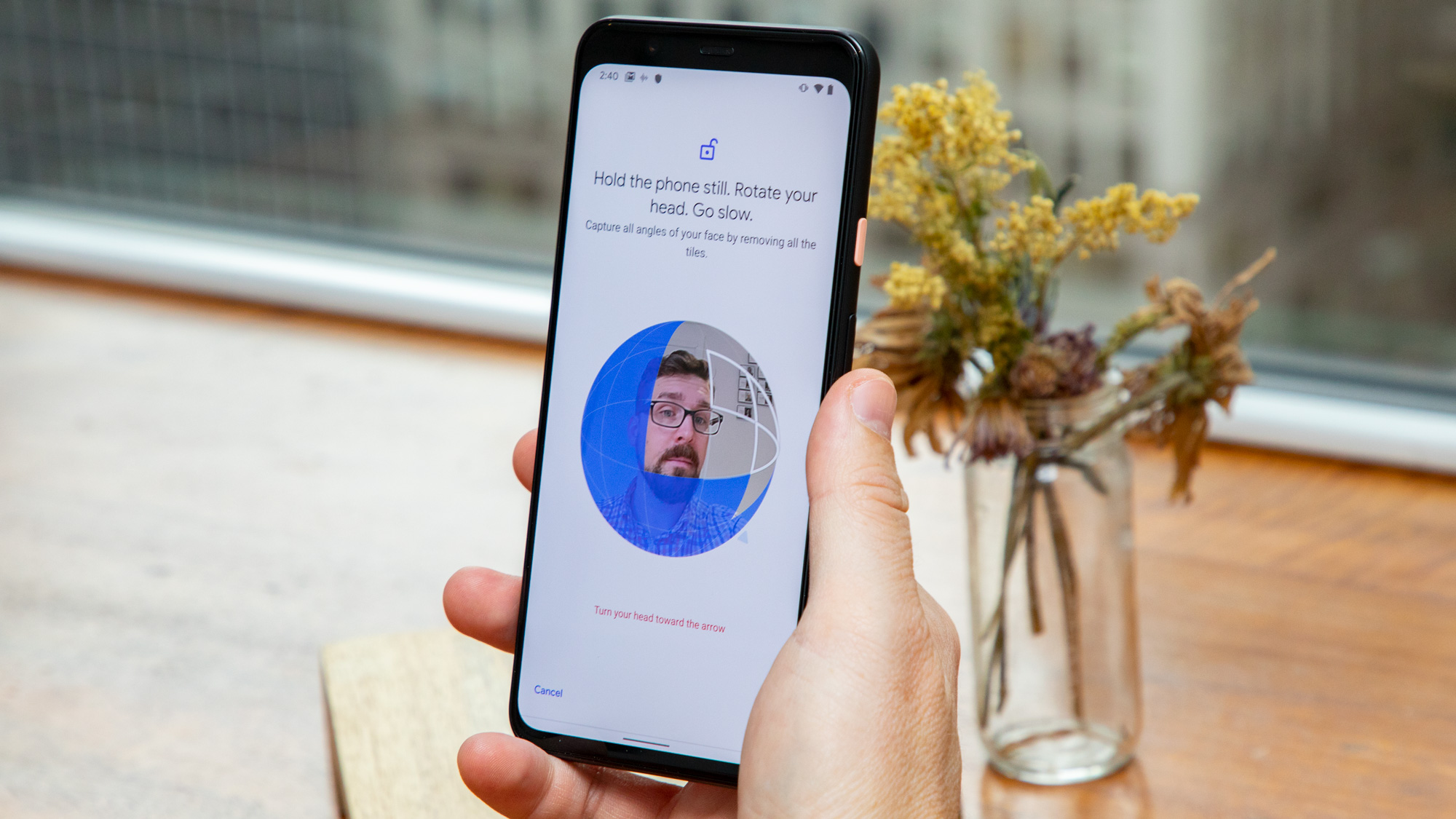
Face Unlock and Motion Sense
Several years ago, Google introduced its Soli radar technology on stage at Google IO - and now it’s finally here, implanted in a pair of chips on either side of the Pixel 4 XL's front-facing camera. At launch time, it’s used for exactly two features: Face Unlock and Motion Sense.
Face Unlock does exactly what it says, and after Google stripped the rear fingerprint sensor from this generation of Pixel phones, it’s the only biometric method of unlocking the phone or authenticating. Just a heads up: it’s not exactly like Apple’s Face ID.
For one, it’s a little finicky, unlocking most - but not all - of the time. Plus, it’s not as secure as Apple’s facial identification. By Google’s own admission (via a disclaimer in the Face Unlock settings page), it can be unlocked while a user’s eyes are closed, like while they’re sleeping…or dead.
In response, the company notified journalists that an update is on the way for users to optionally require eyes to be open when face-unlocking; in the meantime, the Pixel team advises wary owners to use Lockdown mode (make it available in Settings > Display > Advanced > Lock screen display, then hold down the power button to access it), which requires a PIN/pattern/password for the next unlock.
Further, Google Pixel 4 XL’s Face Unlock isn’t a biometric supported by bank apps just yet - heck, it doesn’t even work with Google Pay - so kiss your quick authentication goodbye for now. Score another for Apple’s Face ID.

Motion Sense, on the other hand, is a feature in search of a purpose. And much better software.
Conceivably, controlling your phone with aerial hand movements is novel and a great alternative to touch inputs, especially for disabled users eager for more accessible options.
Despite its poor execution, the LG G8 had a good idea when it included aerial gestures with its Air Motion feature, and the Google Pixel 4 XL’s Motion Sense does technically work better. But in practice, we found that we activated Motion Sense more on accident than on purpose, and its extremely limited use cases pretty much doom the feature to be forgotten if it doesn't become more widespread on the phone.
At launch, Motion Sense can do essentially two things: skip or repeat songs by swiping over the phone, and quieting alarms or dismissing calls when you reach for the handset. You can also set it to dimly light the screen and show notifications when it detects motion, which might be the most useful application of the tech, but it’s not much of a feature.
The alarm-muting function works like a charm, but controlling music is worse than hit-or-miss: we often accidentally skipped songs while absently moving our hands around the phone. At launch, you can’t turn Motion Sense off while the screen is locked, which seems like a big oversight.
Of course, both Motion Sense and Face Unlock can be improved with future software updates, and we fully expect to revise this review when that happens. Both have a lot of promise - and a lot of room to grow before they become killer features of the Pixel 4 XL.
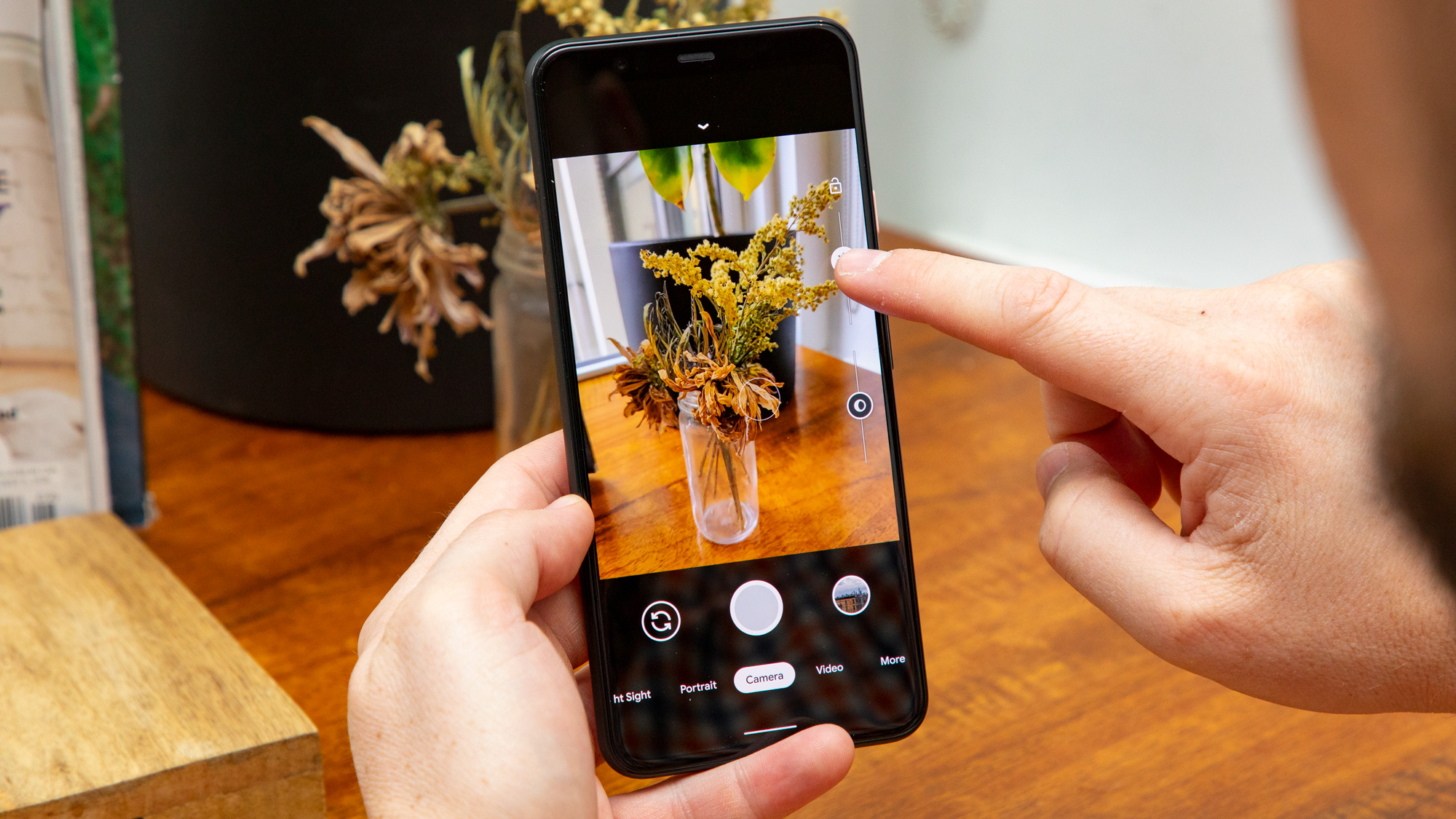
Camera
The Google Pixel 4 XL’s camera suite remains the standout perk of the phone. It still produces great photos in a variety of situations, although the lack of an ultra-wide lens means it’s somewhat less versatile than pretty much every other Android flagship released in 2019.
But the Google Pixel advantage has never been in lenses - it’s in the software, which has worked wonders with even a single lens. The Pixel 4 XL’s main shooter is still 12.2MP though the aperture has been improved slightly to f/1.7. It manages a 77-degree field of view (FOV), which is far from the 123-degree FOV in the Samsung Galaxy S10, for instance, but it gets the job done.
The Google Pixel 4 XL’s shots come out a bit warmer than other phones, but with fantastic background clarity and resistance to flare effects. It’s easy to get depth effects from basic shots and the camera preserves the foreground with stunning clarity - we’ve gotten some truly spectacular water shots.
With the new Dual Exposure mode just a screen tap away in the main camera modes (which lets you fiddle with brightness and shadow), we found it plenty easy to tweak your image before you take it.
The display’s Live HDR+, a new feature, shows a more accurate preview of your images – ideally, what you see before you take the shot is what you get after. We pretty much found it to work as advertised.
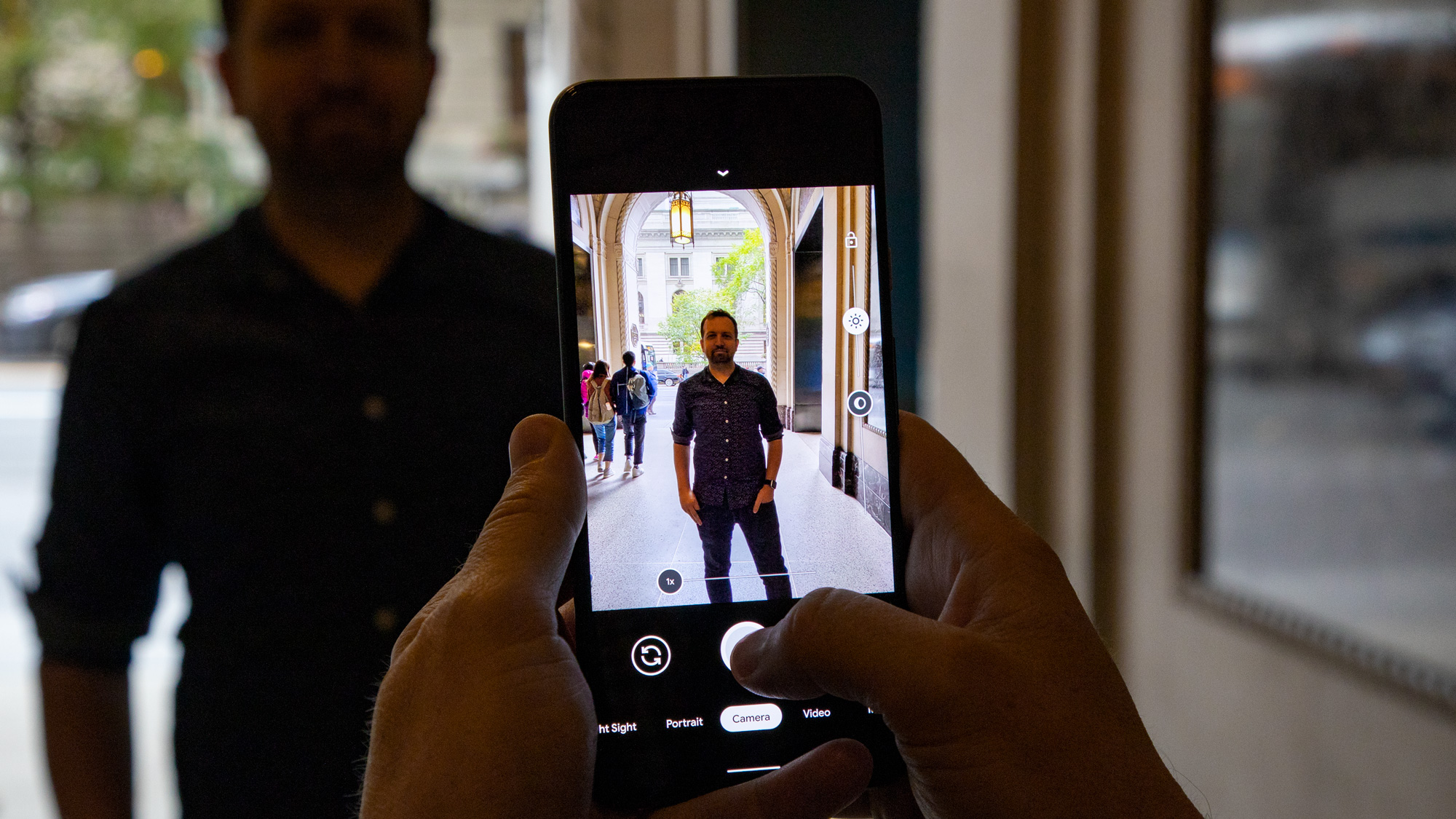
The new 16MP f/2.4 telephoto lens offers a 2x optical zoom, and hits a hybrid zoom of up to 8x. The camera app switches to the new lens at around 1.8x zoom with barely a hitch, which is a nice touch, though the telephoto shoots slightly less warm photos. But oh, what photos they are – combined with the Super Res Zoom introduced in the Pixel 3, zoomed-in photos are much crisper.
Considering the stiff competition from the iPhone 11 line’s improved night photo modes, it’s no shock that the Pixel 4 XL’s Night Shift has been upgraded. Low light shots mirror daylight, and outclass nearly every other phone’s night-time shots.
This is ramped up to an extreme degree with the introduction of Astrophotography: it recognizes the user is attempting to photograph the heavens and sets for a long exposure (nearly four minutes – so bring a tripod). The effect is incredible, clearly showing planets and stars while also illuminating the foreground, including people. You’ll be able to capture cityscapes and the night sky in one image which - while not perfect - is the best nocturnal phone photography we’ve seen yet.
As for the front-facing camera suite, to make room for the Soli radar chips placed alongside the front-facing lenses, the two selfie shooters present in last year’s model have been reduced to just one 8MP camera. It’s pretty apparent when taking portrait mode shots, which have admirable but obviously software-generated depth effects added after the photo is taken.
Given how much Google trumpeted the ultra-wide effect achieved by the Google Pixel 3 XL’s dual-lens selfie, it’s a shame the company quietly diminished it in the new model, though the drop to 90-degree FOV (down from 97 in its predecessor) isn’t as bad as it could be.
Camera samples

At Storm King Art Center in New York, up the Hudson River from NYC.

A lovely angle, but the lack of an ultra-wide lens makes it hard to get this all in frame while still blocking the sun just so at the top of the art piece.

Here's a comparison shot from the same position taken with the Samsung Galaxy S10 Plus' ultra-wide lens.

Back to the Google Pixel 4 XL and its color-catching capabilities.

Portrait mode.

Another portrait shot - note the clarity in the water, especially in the fountain spurt.



While the light pollution of NYC keeps the Astrophotography setting from triggering, you can still get a lot out of the camera - even without Night Sight, as here.

But turning Night Sight on still has benefits, as here - nearly bright as day down on the street and on the tracks.
Performance
The Google Pixel 4 packs a Snapdragon 855 chipset, which isn’t quite as advanced as the mid-year upgrade Snapdragon 855 Plus, but that’s not a deal-breaker. The phone is plenty fast enough for all tasks, and with the Adreno 640 graphics chip, powers games like PUBG without a hitch.
The Pixel 4 XL’s 6GB of RAM definitely pales in comparison to other Android flagships, but we didn’t see any performance dips or other signifiers of memory limitations. Heck, if Apple can get away with 4GB of RAM in its blazingly-fast iPhone 11 series, the Pixel 4 XL should be just fine.
Where the Google Pixel 4 XL cuts corners is in storage, which starts at 64GB - an insultingly low amount in 2019. With the included package of Google and Android apps (plus a few others) and a week’s worth of photos and video, we’d already used up a third of that amount.
The only bigger tier is 128GB, which is the baseline for just about every other Android flagship released this year, and far below the terabyte of storage at the top end of phones like the Samsung Galaxy S10 Plus.
On top of that, there is no microSD card slot to manually expand storage, which feels like the final guardrail funneling users toward Google’s suggested solution: the company’s Google One cloud storage, which carries a monthly subscription.
There are a couple workarounds, thankfully, as Google still allows users to upload as many images as they want into the cloud via Google Photos at limited ‘high quality’ for free (capped at 16MP and 1080p video). Combine that with a Pixel 4 XL optional setting to delete backed-up photos when storage becomes limited (starting with the oldest) and users can mitigate the phone’s low storage woes.
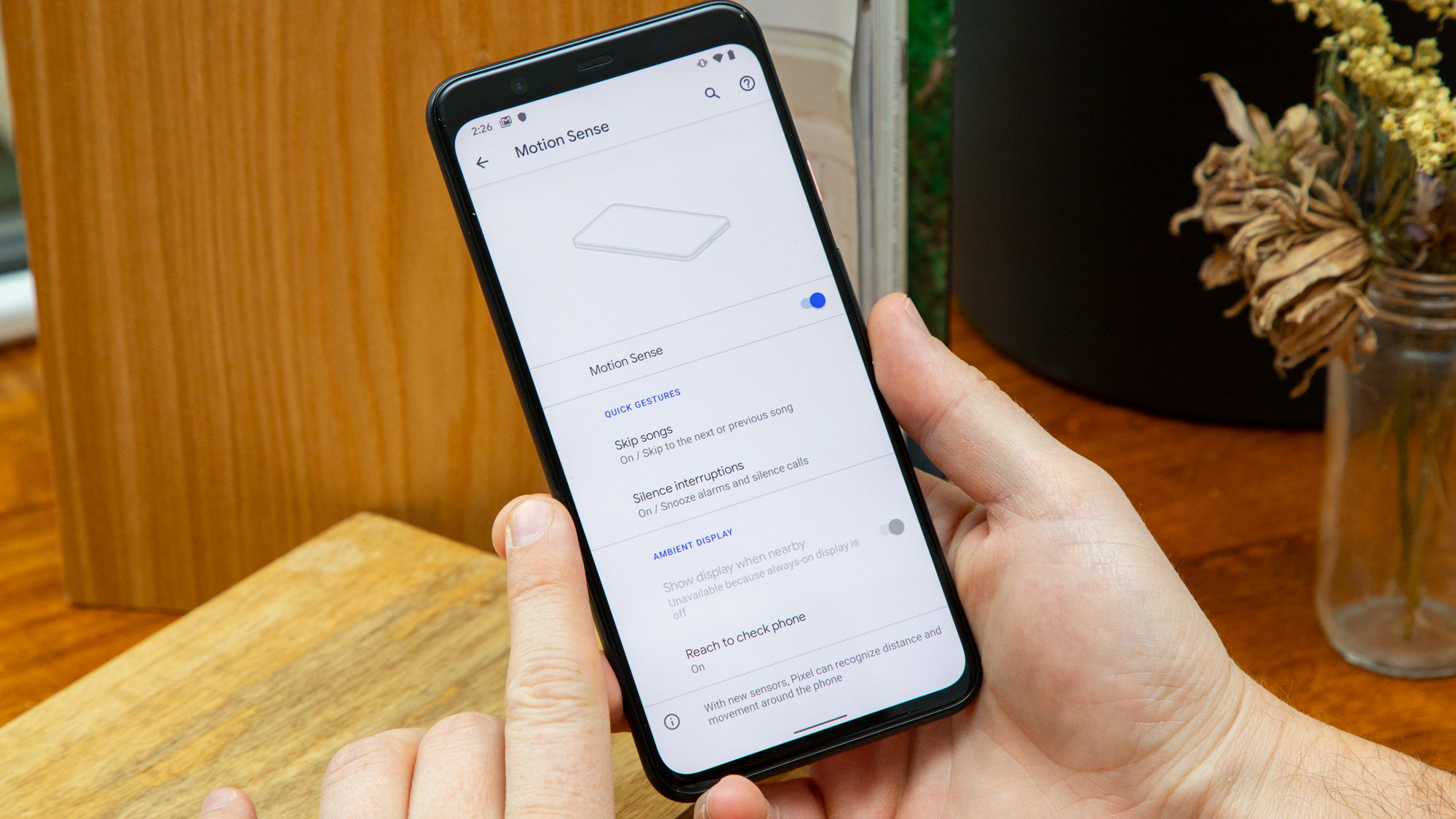
Operating system and Assistant
Even though Google has made strides to speed up Android version adoption with its Android One program, it still takes months (if not the better part of a year) before many phones get the update. As such, the Google Pixel 4 XL has a big advantage in packing Android 10 out of the box, as well as getting first dibs on newer versions when they drop every year.
The Pixel 4 XL introduces several new app perks and features which seem like great little additions that, let’s face it, not everyone will use. They’re cool to have, just disparate in their focus. And some of them are even coming to the Pixel 3 and Pixel 3a - not all, but enough of the big ones.
Live Caption, first shown off at Google IO 2019, is one of these new perks heading to the previous generation: if you’re playing any video or spoken audio (aside from phone and video calls, per Google), you can tap the screen to bring up the volume slider with a new keyboard button below - tap the latter to activate Live Caption, and voila, the content will have captions.
Note that it works whether you’re on or offline, as all the computation happens on the device, and Google claims it won’t leave the device. The company shrunk the storage footprint of the neural language processing for this feature and Google Assistant, allowing much of the machine learning-assisted tasks to be done locally for faster help.
Speaking of Google Assistant, it’s more integrated on the Pixel 4 XL than in previous phones, both on the back-end and through the interface. Summon it by swiping from either bottom corner of the phone, squeezing the lower sides with Active Edge, tapping the Assistant icon, or simply saying “Hey Google” or “Okay Google.”
Basic tasks (like opening apps or turning on features) are faster, and Assistant should be smarter about what you’re asking it to do while you’ve got certain apps open - while in YouTube, for instance, asking “search for lo-fi chillhop” will start a search within the video platform.
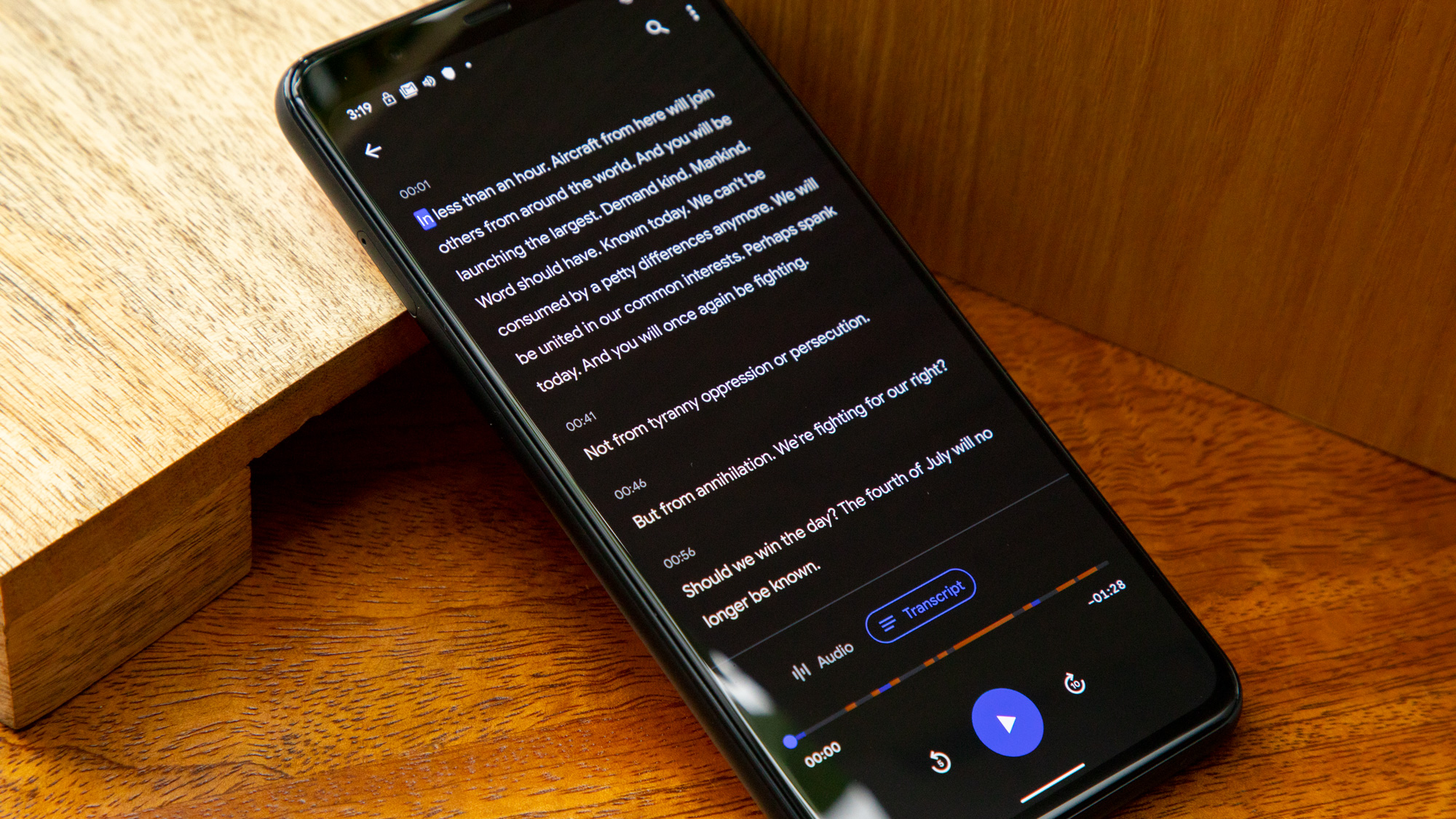
The other new features are less broadly helpful, like the new live captioning in the Recorder app (also coming to Pixel 3): when you tap record, you can tab over to ‘transcript’ and see the phone translate audio into words.
It isn’t totally accurate - we had it listen to one of the greatest speeches of all time and the phone elided or misheard every tenth word or so - but it’s free and useful in a pinch. Other than journalists, media employees and the hearing-impaired, we don’t know if too many users will even try it out.
New to, and only on, the Pixel 4 range, is Personal Safety, an app Google introduced as a car crash safety net. It uses the handset’s sensors to detect if you’ve been involved in a car accident and, if the user doesn’t respond when the app checks in, will call 911. Users will have to set it up beforehand, and it’s only available in the US at the moment.
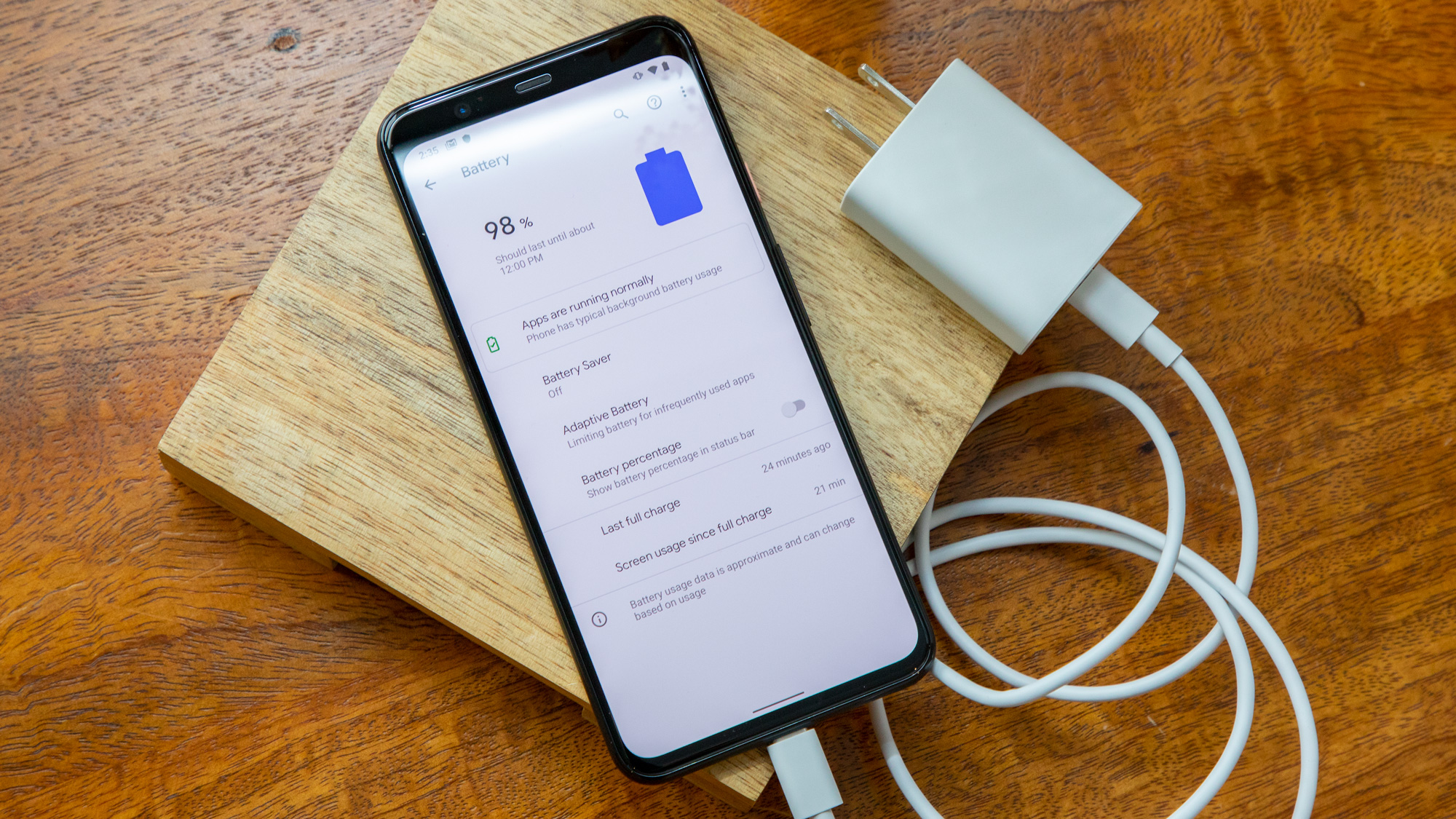
Battery
In what may be the biggest drawback of the phone, the Google Pixel 4 XL’s battery life is, by today’s standards, barely adequate. While Google claims that the phone should last through a day of use, especially with the enabled-by-default Adaptive Battery that limits infrequently-used apps’ background activity, our limited experience saw the phone falling short.
In one representative instance, we went from 100% to 50% in around 8 hours under typical conditions, which included shooting some photos, listening to audio, and streaming content, but mostly just texting and browsing the internet. That essentially guarantees you’ll need to juice your phone back up at least once during the day, which is disappointing.
And that’s with the Pixel 4 XL’s 3,700mAh battery, which isn’t negligible - and is bigger than the shockingly low 2,800mAh capacity of the standard Pixel 4.
There will probably be some consumers who rightly opt for the Pixel 4 XL over the smaller model simply to ensure their phone lasts as long as it can - which, at least now (and barring serious optimization down the line with a software update) is about or under a day.
Thankfully, the Google Pixel 4 XL comes with an 18W fast charger in the box, though other Android phones are surging ahead with packed-in higher-rate chargers, like the 30W WarpCharge 30T in the OnePlus 7T series.
Buy it if...
You like pragmatic full-featured phones
Those who want a no-frills Android flagship with a sensible design will love the Google Pixel 4 XL. It doesn’t excel at anything but photography and clean UI, and that’s okay.
You want to take the best photos without stress
Casual camera phone users who want to take photos at any time and don’t need tricks from hardcore zoom or ultra-wide lenses should seriously consider the Google Pixel 4 XL, as most of the camera magic happens behind the screen.
You want the latest updates as soon as they're available
Coming straight from Google means the Pixel 4 XL will be in the first wave of Android upgrades immediately after they go public. Other phones, even flagships from Samsung, often have to wait months (if not the better part of a year).
Don't buy it if...
You want the highest-performing phone with the newest features
Anyone who wants the absolute top phone would do better with other Android flagships. The Google Pixel line is about doing the basics best for a little less coin, but it’s still a top-tier phone.
You want a more affordable flagship
The Pixel 4 XL also comes at a top-tier price, so anyone yearning for the golden days of the earlier - and more affordable - Pixel phones should look elsewhere.
You want a premium-looking phone
Glossy, sleek, chromed, gradient - these are not words to describe the Google Pixel 4 XL. If you want a phone that screams elite with slick looks, try the even pricier Samsung or Huawei flagships.
Comparisons
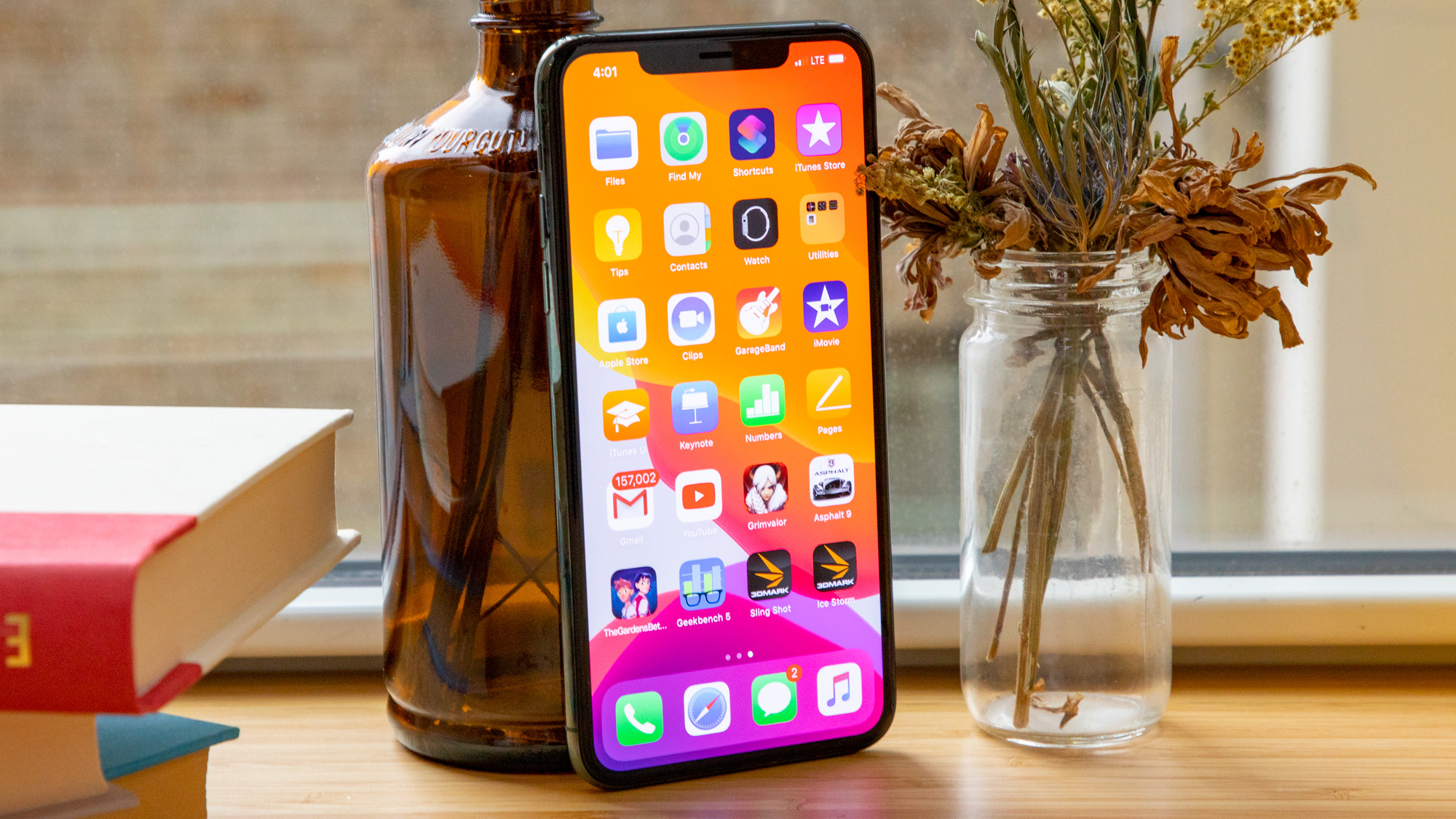
Apple iPhone 11 Pro Max
The iPhone 11 Pro Max has a bigger (6.5-inch) screen with a notch and, funnily enough, a similar matte glass back. But silly tri-lens block aside, it looks more like a premium device than the Pixel 4 XL, and comes with more on-device storage space at the top tier.
Apple’s big phone also has a more versatile suite of lenses and all the benefits of iOS, if that matters (it will for Apple Watch owners, say).
Yet the iPhone 11 Pro Max is also more expensive at a baseline, and given the Pixel 4 XL will get Android updates as soon as they’re released by Google, the OS update lead Apple’s phones have over other models doesn’t apply.
Read our full iPhone 11 Pro Max review
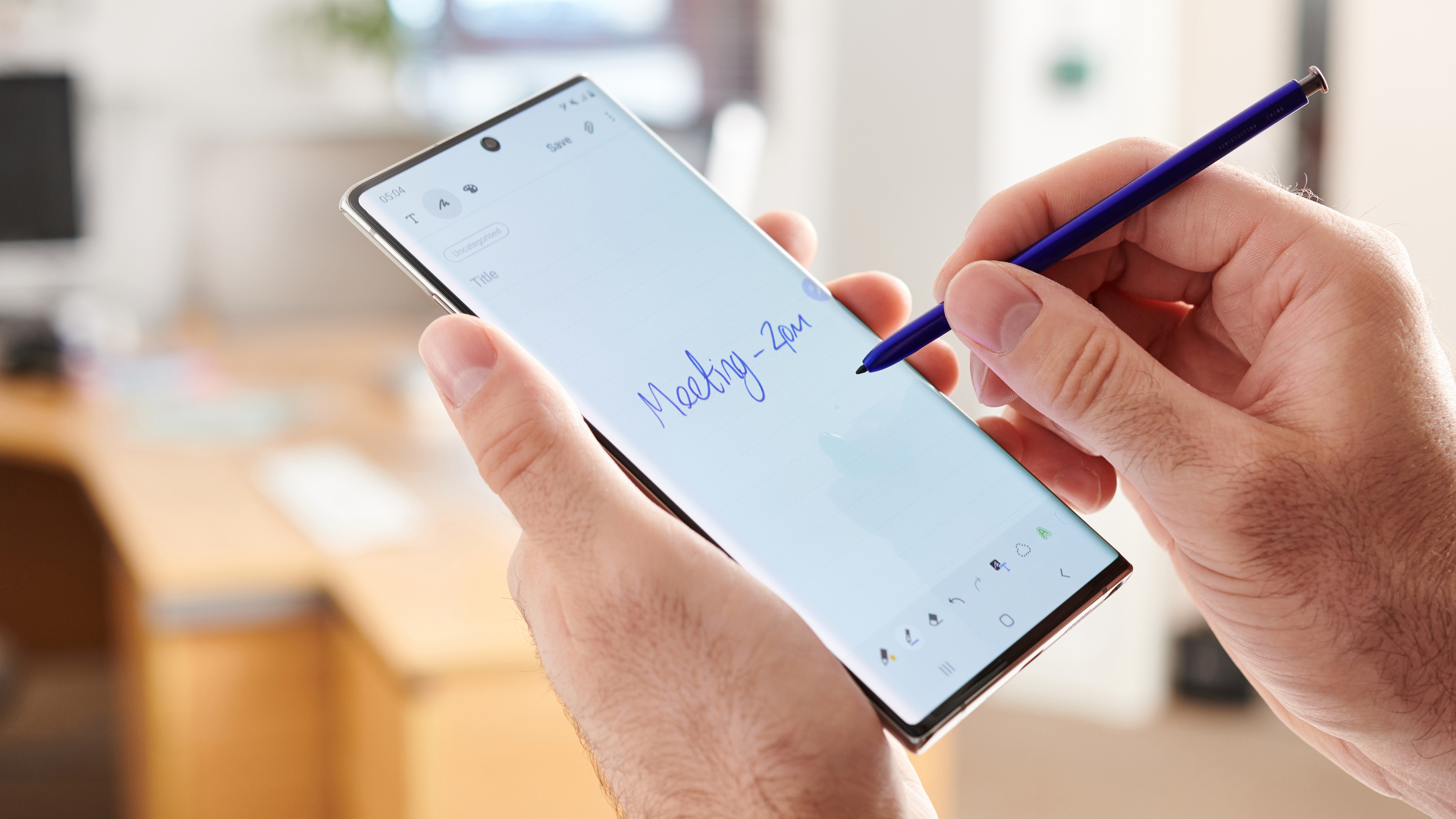
Samsung Galaxy Note 10 Plus
The Samsung Galaxy Note 10 Plus is a bigger, slicker phone than the Pixel 4 XL by all metrics: shinier, more lenses, and with the line’s signature stylus. It also packs Samsung’s UI overlay and all the fun shortcuts that come with the S Pen stylus, like taking notes and using it as a photo remote.
Yet the Note 10 comes with Android 9 Pie out of the box, and given how long it takes Samsung phones to get big updates, it might not get Android 10 until 2020.
Read our full Samsung Galaxy Note 10 Plus review
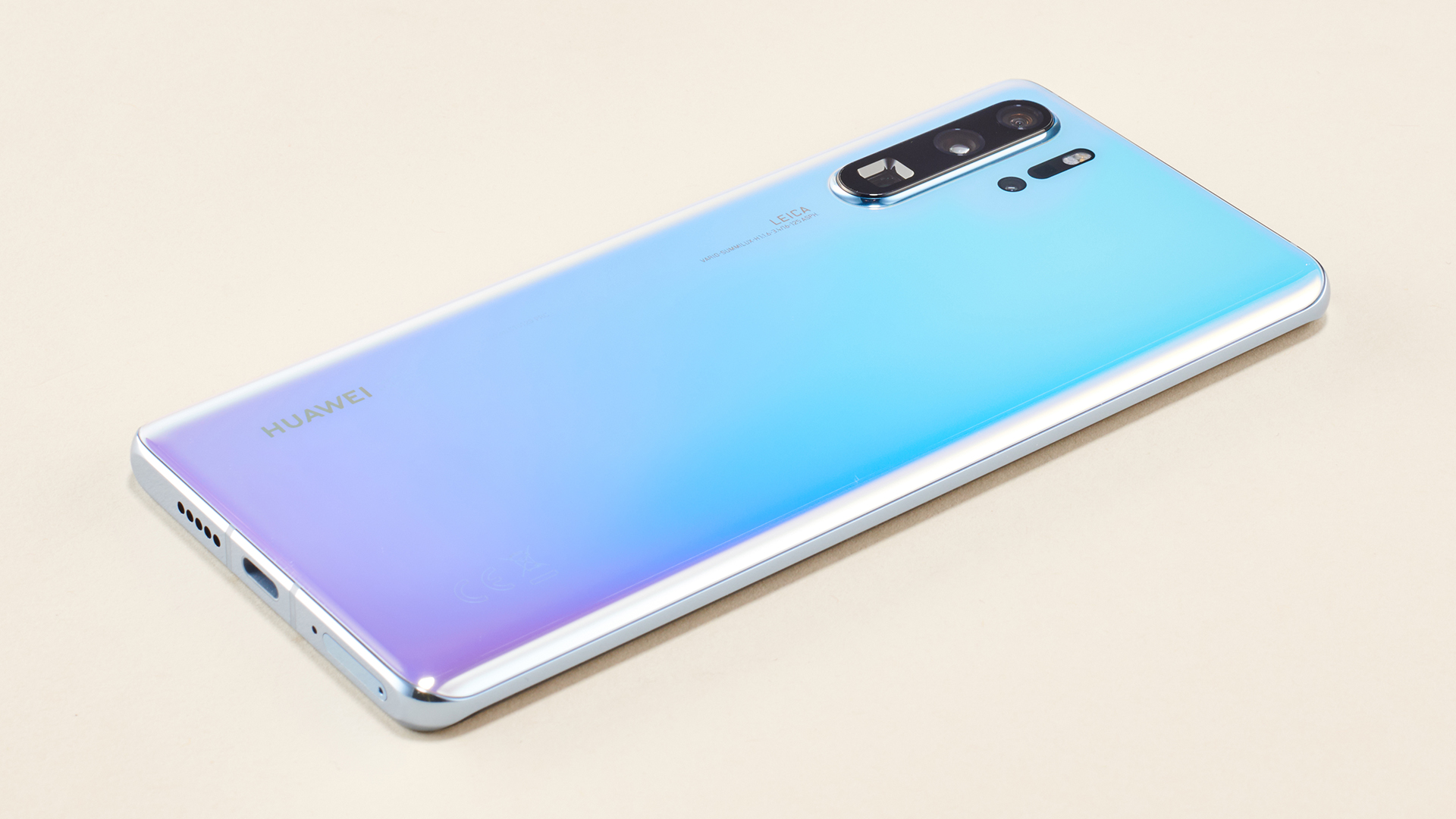
Huawei P30 Pro
The Huawei P30 Pro is still the king of our camera phones list, but that’s also dependent on capability: the phone’s photo software is good, but not as good as the Pixel 4 XL’s. What it does have is more lenses, and a very generous 5x optical zoom lens. We’re looking forward to seeing, once again, whether Huawei’s optics can overcome Google’s software.
Unfortunately, due to the current trade tiff between the US and China (and Huawei in the sanction spotlight), it’s unclear if the phone’s Android pipeline will be shut down in the future, making it harder to recommend the P30 Pro, which could lose out on all-important security updates as well as the big annual feature versions.
Read our full Huawei P30 Pro review

Google Pixel 3a XL
It shouldn’t be a surprise that, with such a focus on software over hardware, the Pixel line’s mid-range entry is a solid value pick with nearly all its pricier siblings’ features at little over half the cost of the Pixel 4 XL.
The Pixel 3a XL only has one rear lens, a slower chipset, and less RAM, but it’s also getting some of the neat features coming to the Pixel 4 XL. This might be the most crucial comparison, and a welcome one if Google’s new big flagship’s price tag is tough to stomach.
Read our full Google Pixel 3a XL review
David is now a mobile reporter at Cnet. Formerly Mobile Editor, US for TechRadar, he covered phones, tablets, and wearables. He still thinks the iPhone 4 is the best-looking smartphone ever made. He's most interested in technology, gaming and culture – and where they overlap and change our lives. His current beat explores how our on-the-go existence is affected by new gadgets, carrier coverage expansions, and corporate strategy shifts.
